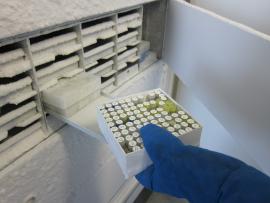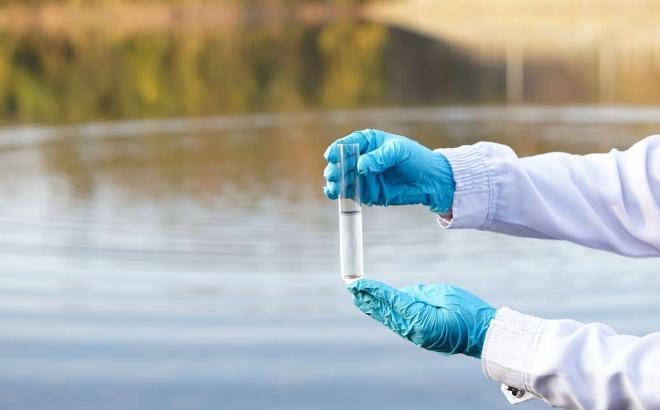Biobanking: How expectations about future users shape biobank collections
Biobanks collect samples and data for biomedical research. Samples and data must be carefully curated and linked to each other to be useful for biomedical research purposes. Open discussions of the expectations that sustain this biomedical work can help increase the sustainability of biobanks and research infrastructures.

Relations between samples and data as a bottleneck
In biobanks, samples such as body fluids or tissue samples are collected and stored for biomedical research. The samples need to be linked to data. However, linking samples to data is often a bottleneck. Together with Lisa-Maria Ferent and Ulrike Felt from the Institute for Science and Technology Studies at the University of Vienna, Ingrid Metzler, a senior post-doc at the Department of Biomedical Ethics and Health Care Ethics at Karl Landsteiner University since November 2020, has investigated how the linking and curation of samples and data takes place in practice and what can be learned from this for the construction and design of biobanks. The researchers based their work on qualitative analyses of field notes and interviews with actors in five Austrian biobank projects that are part of the pan-European research infrastructure BBMRIC-ERIC.
Curating samples and data in hospital-based biobanks
The biobank projects examined were clinical biobanks, which stored samples collected in rotuien diagnostics for research purposes. , Several additional steps are required apart to use the collected material for biomedical research . First, clinicians must inform patients about the biobank collection and obtain their consent. Samples need to be linked to specifically collected and carefully curated data sets. In addition to "quality data", which, among others, documents the time between the collection of a sample and its storage, it is necessary to link the samples with standardised clinical data. Only by linking the sample material with data does a scientifically usable biobank emerge, which allows targeted selection of material for research projects and meaningful interpretation of these analysis results. The common denominator of these steps is that they involve work that often remains invisible.
Visions of future uses and users
The researchers showed that expectations about future uses shape the curation of samples and data., It would also be theoretically conceivable to analyze samples right at the time of their collection and to store the results as data to save space, energy and labour for the preparation and storage of sample material. However, for many of the actors interviewed, the added value of a biobank consists in the fact that the stored samples are not yet "dataified". Samples are stored as "raw material" for research with new methods and new scientific questions in the future that cannot be foreseen in detail in the present. While in the planning phase of a biobank, it is often not yet clear for which biomedical research purposes the collection will be used, the stakeholders involved in the establishment of biobanks have very concrete expectations about who will and should use these samples and data in the future. This is not only about deepening existing research collaborations. Stakeholders also see biobank collections as a strategic tool to establish new collaborations.
Shaping sample and data use
The research demonstrates the importance of addressing the expectations, values and perceptions of the people who curate samples and data. To successfully implement the vision of data-driven research, the often invisible curation work should be acknowledged and rewarded. In addition, building a sustainable biobanking infrastructure requires a broad discussion of the expectations of future uses of samples and data and their potential users, in which those curating samples and data should have a say.
Original paper
The research was funded by the Austrian Federal Ministry of Education, Science and Research. The publication is freely available in the journal Big Data & Society.
Metzler I, Ferent L-M, Felt U. On samples, data, and their mobility in biobanking: How imagined travels help to relate samples and data. Big Data & Society. 2023 Jan. doi: 10.1177/20539517231158635




